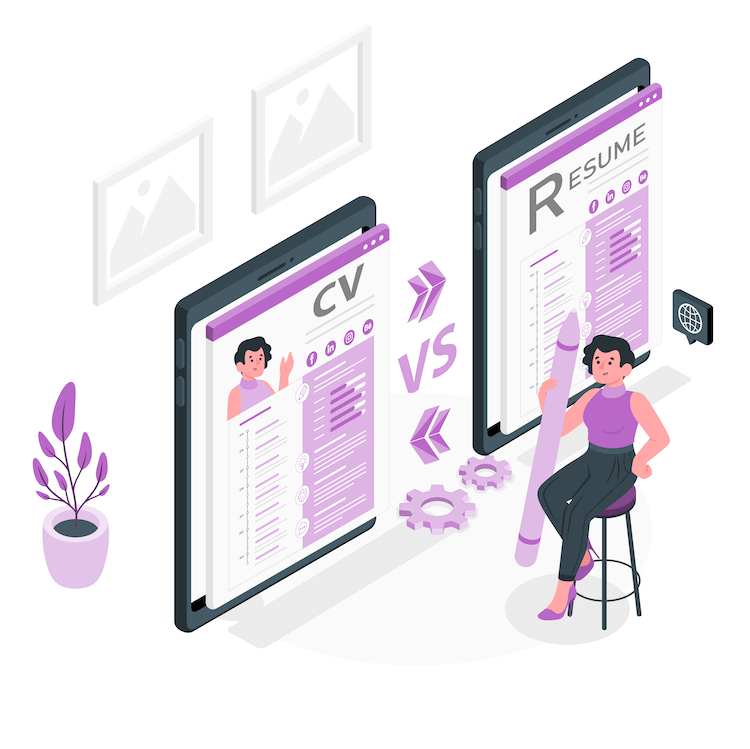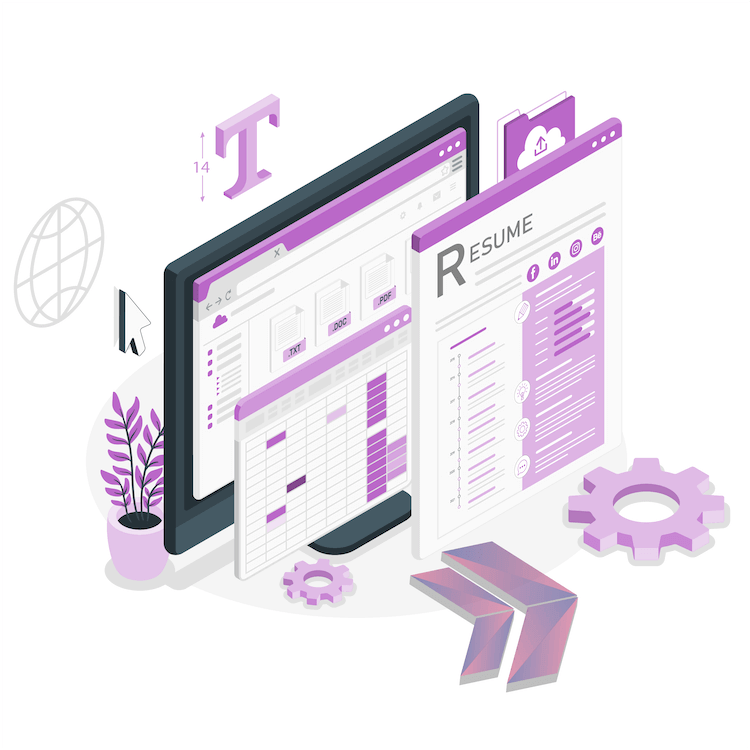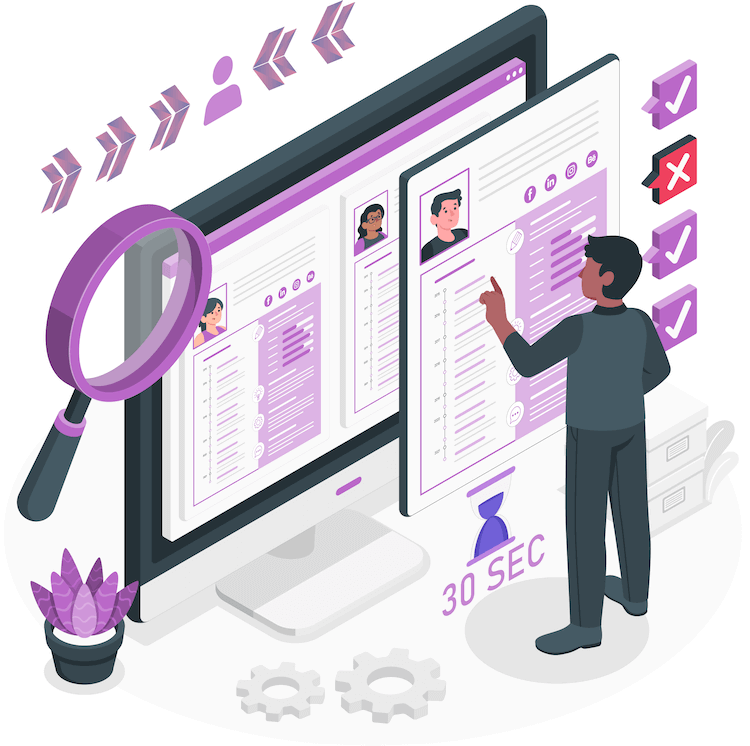Your Resume is the most widely used document for job applications in North America, displaying qualifications such as individual skills, qualifications, and job history. However, the resume is even more confusing for Europeans accustomed to CVs, as it takes a lot of effort and serious strain to prepare even for a native North American.
That brings to mind the question, “Is it really that difficult to prepare a document with a maximum of 2 pages?” Actually, it is not. Or it would be more correct to say if you can distinguish a quality resource from a bad source on Google and know how important the special recruiters of the organization you are going to apply to this issue. Your job is not as difficult as it is exaggerated.
Of course, this is true for a moderately smooth resume. But, on the other hand, you can also prepare a high-level resume that can be shown as a “legend” by paying companies that do this job professionally. Of course, as in every subject, there is no limit in this regard, but the important thing is that we do this work ourselves and do not have to pay anywhere. The purpose of this article is to give you tips and tricks to achieve this. Let’s learn more…
The Difference Between Resume and CV:

CV is the most common format throughout Europe, The Middle East, Asia, and much of South America. A resume is used in all fields other than medicine and some academic jobs in Canada and the USA. If you are asked to use a CV, it is indicated in the job announcement. Although they coined its name as CV, a unique format is used between Resume and CV in the UK.
While CV generally includes personal information (marital status, age, military service) and photograph, these are not used in resumes. Especially avoid photographing resumes because, according to a study, 88% of resumes with photos go directly to the garbage without being read at all.
CVs are usually 2-3 pages long, and even longer, there is no problem. A resume shouldn’t be more than two pages long, 1-1.5 is ideal. According to another research, a recruiting employee spends an average of 30 seconds examining each resume. Therefore, your resume should be short, direct, and purposeful.
Another difference is the frequency of writing and the purpose. The CV written once can also be used for other job applications, regardless of the position and job applied for. This is because you add a new experience and skill if you happen to acquire it. In addition to this, a resume is written separately according to each job and position applied; hence it is more specific.
What is a Resume? How is it Prepared?
Aim:
As mentioned above, the purpose of writing a resume is not to display all your knowledge, experience, every education you have received, and your entire career. On the contrary, the resume focuses heavily on the job/position applied for.
For example, suppose you have studied sociology and economics, and you are going to apply for a credit officer position in a bank. In that case, you should not mention your sociology undergraduate study or you previously worked as a teacher. Now you are applying for a human resources position; in this case, you should not mention the sales representative in your resume. The basic logic is to talk about the work experience and academic background directly related to the position applied for.
Structure:

The key point here is length. It is good if you can fit it on one page, 1.5 pages are not bad, and 2 pages should be an upper limit. If you go over this 2-page limit, your resume will probably go to the waste bin without reading. To deal with the length, there are a few more important rules about the structure:
- Choose a legible font, avoid fancy and waxed fonts; Cambria or Arial is fine.
- You should use the same font throughout the article; for example, Ariel in the “Work Experience” section, Cambria in the “Education” section, and Times News Romance in the “Summary” section is not a good means.
- You can play around with the font size, provided that it is not too radical. For example, it is fine to use 14 size fonts for headings and 12 size fonts for normal body text.
- Avoid italic and underline as much as possible as they make it difficult to read. You can use Bold.
- You can put the date in the upper right corner in the form of a header (it should be on every page).
- As with any text, use spacing between lines that makes it easier to read. If you have enough space, double spacing is ideal. If not enough, it should be 1.15 at least.
Format:
In a resume, a few items in the format may vary by country, but the general rule is as follows:
a. Heading/Contact Information:
This is the personal information part that we know very well (let’s not forget that we do not include personal information such as age, photo, marital status, etc.). In this section, we write our name, surname, address, telephone number, e-mail address, and LinkedIn URL information, if available.
It would be better to write your name and surname in bold. If your resume consists of more than one page, you must have your name and surname on every page.
b. Profile Summary:
This part is the summary part that we talk about in a maximum of 4-5 lines. Avoid using personal pronouns (“I”, “Me”, “We”) in this section and throughout the resume. For example, instead of starting with “I am a result-driven marketing specialist who…” we should introduce ourselves “A result-driven marketing specialist who is eager to learn every day…”
c. Skills:
This part is how we state our specialty, competencies, knowledge, and skills. For example, technical Skills, Soft Skills, Transferable Skills, IT skills, the software you can use, your features, problem-solving skills, writing skills, organizational skills, etc., can be specified here.
Around 6 lines and 12 items are ideal.
d. Education:
As the name suggests, it is the section where you mention your academic background. If your work experience is more than your education, you can add work experience to item 4 and education to item 5. Let us remind you again, only include your educational background related to the position you applied for. Additionally, never include other educational information unrelated to the position you applied for.
e. Professional Experience:
Again, as the name suggests, this section is entirely devoted to working experience. To put it emphatically, in this section, mention only your work experience related to the job and position you applied for.
f. Additional Information:
If you have a significant interest, hobby, or related professional organizations and volunteer activities you are a member of, you can write briefly to this section. The key is to keep it short and not go into detail.
Language to Use:
First of all, you should use formal language, as you can guess.
- There should be no grammatical errors, spelling, and punctuation errors in your Resume. Thus, read at least 2-3 times before submitting your resume and get support from an expert if necessary.
- Use action verbs that express self-confidence and action. What are these action verbs? Managed, challenged, built, earned, boosted, chaired, accomplished There are dozens of them. You can find the ones that will work for you with a simple Google search.
- Based on the logic of the necessity of using action verbs, avoid using verbs and expressions that express insecurity such as “I feel, I believe“. For instance, rather than saying, “I believe that I can be a substantial component for your organization“, say “I am confident that I can be a substantial component for your organization“.
Tips and Tricks

- Avoid stereotyped expressions such as “responsible for“, ”seeking a challenge” as much as possible. You can search for “what words/phrases to avoid when writing a resume” on Google and reach many of them.
- As mentioned above, avoid personal information as much as possible. For example, beware of details such as why you left your previous job.
- Overselling is better than underselling. Market yourself and your skills well; of course, that doesn’t mean telling a lie.
- Do not write salary expectations. If you are invited, this issue will definitely come to the fore during the interview. At that time, you can state your salary expectation in a reasonable and appropriate language.
- Although it is not a rule to include a cover letter, it is generally good. If you are going to include it, it should be placed above the resume.




